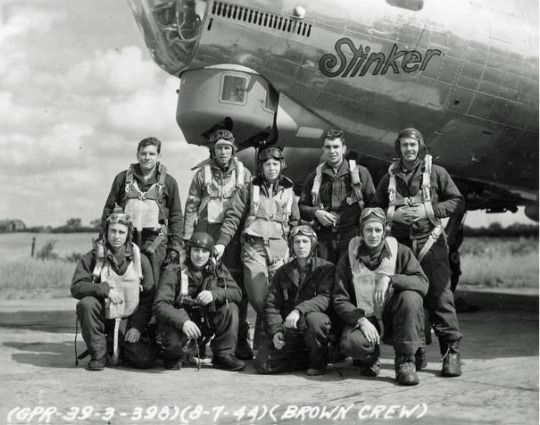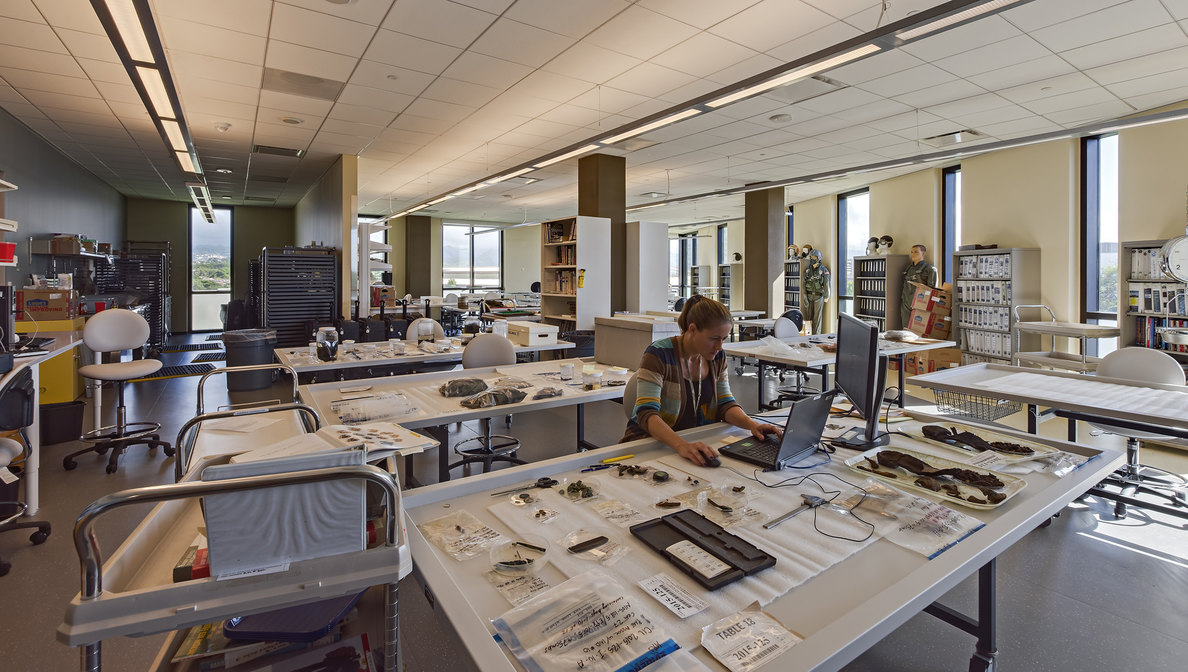Finding the Pieces
By Dan CarlinskyGrowing up with parents who were longtime faculty at the University of New Hampshire, Ed Burton ’91 knew he’d go to college and then to graduate school, because what else would he do? He figured his field would be history, but that’s about as detailed a plan as he could have predicted, since, as it turned out, there were a few zigs and zags along the way. Happy zigs and zags.
True to his very rough forecast, Burton grew up to become a historian, the kind who extols the joys of spending days burrowing into boxes of long-dormant, sometimes fragile files in the National Archives in College Park, Maryland—which some call “the nation’s memory,” but which he calls “a Disneyland for historians.” Still, his unplanned road to the work he variously describes as “cool,” “incredibly fun,” and “the most amazing job anyone can ever have” was anything but direct.
“My parents were mathematicians,” he begins, “but in our house, history books always outnumbered math books. I knew I wanted to major in history or government in college. I remember, in my senior year of high school, sitting on the living room floor with pages from The Fiske Guide to Colleges ripped out and sorted into piles: highly ranked history departments and highly ranked government departments. Bowdoin turned up in the categories I wanted most.”
He focused on Latin American history, then ancient history; he wrote an honors thesis on the First Crusade. When his Bowdoin classmates were spending a semester or two abroad, Burton stayed in Brunswick. Today, he mock-gripes about missing out: “My roommate, my friends—everyone was doing something exciting but me.”
To make up for that, he enrolled in a master’s program at Lund University in Sweden. (One selling point was the cost of tuition: $12 a term.) He had a Swedish-American grandfather, so, he says, “when my household watched the Olympics, once the American team was knocked off, we rooted for the Swedish team.” But he had never been to the country and didn’t know the language.
“I copied an entire Swedish-English dictionary onto flash cards with an inkjet printer: nine shoeboxes of four-by-six index cards, each holding 1,250 cards,” he recalls. “For four months after graduation, I spent between four and ten hours a day in the front yard, listening to Radio Sweden on the shortwave and flipping flash cards. I always think anything worth doing is worth overdoing.” As it turned out, the over-doing came in handy.
Burton explains: “Lund was thinking of starting an English language history master’s program—I was their guinea pig. But by the end of my time there, most of what I had to read for courses was in Swedish. Plus, I could manage in the grocery store. I think the time I put in with all those index cards was well spent.”
As the only American in the department, Burton says, “I was others’ exotic foreign exchange student.” By default, he became the resident expert on American history, but he studied Scandinavian history and wrote a master’s thesis on neutral Sweden’s relationship with NATO during the Cold War (“closer than anyone cared to admit at the time”). When he was done, he stayed in Sweden and entered a doctoral program at the University of Gothenburg. There, he again switched his academic focus, thanks to a chance event.
“One day I was in the hallway, opening my mail,” he recalls. “I heard the chairman: ‘Burton! We have a problem!’ It seems a lecturer had gone to Jerusalem, had a religious conversion, and decided not to come back. They needed someone who could talk about nineteenth-century US history for a few hours. I had never studied American history at Bowdoin, but I did the lecture, it went over well, and the department’s leadership decided to use me again.
“A lot of the faculty were students in the 1960s, pretty far to the left—some raised money for the Viet Cong—so the chairman insisted that I teach a class on the Vietnam War. I was nominated for a university-wide prize for best lecture. Nobody in the department had been nominated before, so the department leadership was happy. I was nominated again. And again. And again. I gave that class something like seven times.”
So, having become something of an accidental expert on the Vietnam War, Burton chose as his dissertation topic how Swedish-language immigrant newspapers in America reported and commented on that war. As part of his research, he visited an archive at the Swedish Foreign Ministry and read letters sent to the Swedish government by Americans during the Vietnam era.
“I sat down in one of those little carrels,” he remembers, “and they brought me three large carts packed with file after file of letters from worried moms and dads from across the US. Each one was a variation of ‘Dear Mr. Prime Minister, We understand your country is opposed to what our country is doing’—Sweden had just opened relations with Hanoi—‘Can you tell us what happened to our son?’ Hundreds, if not thousands, of letters. I became really interested in prisoners of war and the missing in action. I think it’s impossible to read letters like those and not be terribly moved.”
Swedish academics, according to Burton, take their time with PhD programs (he spent eight years on his) and take the dissertation very seriously. “In Sweden,” says Burton, “if you’re ABD—all but dissertation—you’re at the starting gate. You’re nowhere. The dissertation is everything. At my defense, there were three hundred people in the audience. And after you’re approved, you’re expected to put on a banquet for everybody. I was an American, so I served hot dogs.”
After earning his degree, Burton did what most PhD recipients do: He scouted around for teaching jobs. He first lectured in American history at the University of Aberdeen, in Scotland, then came home to teach at UNH, Franklin Pierce, and the University of New England. In 2009, he saw a listing for a historian position with an office in the Department of Defense (DoD), a forerunner of his current employer, the Defense POW/MIA Accounting Agency (DPAA), which is the US government bureau that searches the world for military personnel who didn’t return from war.
The DPAA counts more than 81,500 Americans still missing from conflicts stretching back more than eight decades, including nearly 1,600 from the Vietnam War, some 7,500 from Korea, and a sobering 72,000 from World War II. More than half are thought to be lost in deep water and thus nonrecoverable, leaving about 38,000 for possible pursuit. They may have died in a plane crash, their remains now hidden or scattered. They may have been killed in a ground battle or POW camp and simply left in a makeshift grave, now overgrown, whether in a Vietnamese jungle or in a German forest. They may have been buried in an American military cemetery as “unknown.”
The goal is to locate and identify them all— for their families, for the country—to make good on a pledge to leave no soldier behind. Thus the DPAA’s motto: “Fulfilling Our Nation’s Promise.”
 The agency is headquartered in Virginia, near the Pentagon, with a large forensic identification lab in Hawaii. It has satellite operations at Air Force bases in Nebraska and Ohio and calls on other DoD facilities, including the Armed Forces DNA Identification Laboratory in Delaware. With a staff of 725—half civilian, half military—the DPAA sends teams around the globe to methodically sweep sites with metal detectors and to sift soil, first for a piece of a plane wing or a parachute buckle, then possibly for human remains to be returned home and analyzed in hopes of identification.
The agency is headquartered in Virginia, near the Pentagon, with a large forensic identification lab in Hawaii. It has satellite operations at Air Force bases in Nebraska and Ohio and calls on other DoD facilities, including the Armed Forces DNA Identification Laboratory in Delaware. With a staff of 725—half civilian, half military—the DPAA sends teams around the globe to methodically sweep sites with metal detectors and to sift soil, first for a piece of a plane wing or a parachute buckle, then possibly for human remains to be returned home and analyzed in hopes of identification.
The work relies on a wide variety of specialists, among them forensic anthropologists and odontologists, archaeologists, mountaineers, divers, explosive ordnance technicians, combat medics, translators, genealogists, and—to set each case in motion—historians, who search out every record, every clue, every bit of data findable, in the hope of leading to recovery and identification of those who never came home.
DPAA historians scour unit records, mission reports, individual deceased personnel files, missing air crew reports, witness statements, cemetery records, and other archival documents. They search the internet and read old newspaper stories, memoirs, and oral histories. They communicate with families of the missing and with amateur researchers and local officials in battle and crash zones around the world.
Over time—often years—as information is painstakingly gathered, the historians constantly churn through everything again and again, looking for the piece of new information that will make a dossier that can warrant the exhuming of a war casualty buried without identification or, in cases of the missing, an overseas investigative mission and a possible all-out recovery effort. Cases once considered beyond hope are revisited repeatedly in light of improvements in DNA technology, isotope analysis of bones, and other lab processes.
For Burton, with his unplanned specialty in the Vietnam War, the job seemed a fine fit; he signed on. But the agency was looking to beef up its efforts to locate and identify service members lost in World War II, so he switched his focus to the earlier war. Today, World War II remains his main area of concentration. He’s assigned to a group that searches for Americans who died in Germany and other central European countries.

“My first week on the job,” Burton remembers, “my supervisor said, ‘Find an unresolved case and see what you can do.’ I ran across the case of a B-17 that crashed very close off the coast of Sweden in 1944, so of course I had a personal interest in that one. A lot of aircraft landed safely or crash-landed in southern Sweden, but this was the only case where crew members died and were never recovered.
“I wrote to the Swedish war archives and started digging. The plane was nicknamed ‘Stinker.’ Of the crew of nine, eight were killed; two were washed ashore, and a Swedish coast guard vessel picked up the survivor.”
The wreckage of “Stinker” had never been found. For several years, Burton regularly revisited the file, but could find nothing that would clinch the case. Then, in 2015, a fisherman pointed two local divers to a spot where he caught riveted aluminum parts in his net. The two found the underwater crash site and Burton promptly went to Sweden to investigate.
“We had it all mapped out and were trying to decide how to proceed,” he says. “The plane was in tiny fragments, the seabed is very rocky, and the site had spread. Should we just hoover up everything on the seabed or be more selective? Meantime, the two divers went to the local press, and it became the lead story on Swedish television and on the front page of Expressen, the big newspaper, with a headline saying the Pentagon demands the remains of the dead crew members returned. The story spoke about ‘the corridors of power in the Pentagon’ and quoted me. Of course, when people met me, they said, ‘This kid is not in the corridors of power.’”
The divers found all four of the plane’s engines and other parts, but not the six missing crewmen. The wheels of the DPAA can grind painfully slowly; seven years after the find, with efforts to locate the crewmen so far unsuccessful, the case is still pending. Yet Burton is hopeful. “It’s a pretty good case,” he says. “I think something will happen with it.”
Another of his early cases was resolved last summer with a serendipitous assist from a classmate.
Burton had been tracking the case of three WWII POWs who died in 1944 in a German prison camp known as Stalag Luft 6, in what is now Lithuania; they were buried by their captors in unmarked graves. “They were among the very few Americans lost in the former Soviet Union,” he says. “One contracted diphtheria. The Germans really made an effort to save his life—they knew that the Americans held a lot of German prisoners, so it was to their benefit to treat our captives well. The other two were shot by guards.”
After the war, the camp was in the Soviet occupation zone, so it was off-limits to the Americans charged with recovering the remains of the war dead. Eventually, in 1954, the three were declared nonrecoverable. Even after Lithuania declared independence in 1992, opening up access to the area, nothing happened. “Really, we never thought we could ever get those guys,” says Burton. “The Germans used that camp for thousands of Red Army soldiers, and after the war, the Soviets turned it into a gulag for Lithuanian dissidents. There are human remains everywhere. For a long time these three were back-burner cases, but still on the stove, always on our radar. Some cases you stick with, like a great white whale.
“Then one night I was having dinner with Yunhui Mao Singer ’91, and I was telling her about the case. Her husband had recently served as a Foreign Service officer in Vilnius. He put in a call to the Vilnius embassy, and they put me in contact with an American archaeologist working in the Baltic states. We asked him to look at the site with the latest information I had put together. He found nothing, but with that effort Stalag Luft 6 came off the back burner and went front and center.
“I got in touch with a Lithuanian archaeological group, and we partnered with them to do an excavation in the summer of 2021. We found an old aerial image from 1944, blew it up, and saw a strange anomaly around where people said the burials had taken place. We performed a ground-penetrating radar scan, and it looked as though there were objects about five feet long spaced regularly, about three and a half feet below the surface. We asked the Lithuanians to dig right on that spot. Easiest recovery ever. Two still had their dog tags on. One had a gold Eighth Air Force ring.”
After laboratory confirmation this past summer, families of the airmen were notified, burials were arranged, and the three were moved to the accounted-for list. Says Burton: “I’m proud and happy to have been a part of that one.”

To help with field work on such cases, the DPAA has partnership arrangements with dozens of universities and other institutions with special skills, and keeps in touch with hobbyists in former battle zones who search on their own. For the official government agency, freelancers can present a difficult balancing act. Local researchers can be valuable helpers and very passionate, but sometimes that passion can make trouble.
“There are groups all over Europe with fancy-sounding names, and it sometimes turns out it’s three guys with a metal detector and a back-hoe—World War II cowboys,” says Burton. “In a lot of places, metal detector work is illegal. A backhoe can disturb evidence. And then these guys can find something and put themselves on Facebook holding a skull and smiling. Do we try to rehabilitate them, bring them inside the tent? It’s a constant question for us.”
Burton’s job, like that of a homicide detective or an investigative reporter, is to find and tie together all the parts of a story until he gets to a conclusion that warrants a field mission. It is, he says, “like trying to fit together the pieces of a huge jigsaw puzzle, and you don’t know what the picture is going to look like.” In his nearly thirteen years with the DPAA, he’s been on a few missions himself, but, he says, he’d rather toil with musty paper in archives than with a metal detector in a muddy field. “I’m a historian,” he says simply.
He speaks about the National Archives, that “Disneyland for historians,” with genuine awe and affection. “It’s a bottomless well,” he says, “and almost all of it is paper—just a tiny, tiny fraction is in digital form. If you lined up all the boxes in that building side by side, they’d wrap around the equator I don’t know how many times. Just when you think you know the National Archives, you find something else. And a lot of the war crimes files, you can tell no one has opened them since 1946. You’re the first.”
To help compile his cases, he meets in cities across the country with families of the missing to explain the program and share information. “They get in touch with us because they want to know what happened to Grandpa’s brother,” he says. “Or we invite them because we’ve located some remains and they may have information that will help us make an identification. Most of the dead were very young, usually with no children, so we have to go through nieces and nephews. Or, these days, it’s great-nieces and
great-nephews. Our genealogists are pretty good at tracking them. A family member’s DNA can be very helpful in confirming our work, so we ask people to give a cheek swab for the cause.
“About half the time they have only a vague idea of who we’re talking about—he’s just a faded photo on the wall. The other half, you’re introduced to an eighty-five-year-old guy and it’s his big brother, and he turns into a six-year-old boy again. He tells you about the day the letter arrived, and their mother cried. It’s as raw as it was in 1943. Time doesn’t heal those kinds of wounds. At some point during every family meeting, tears will be shed.
“Over the past three years, all our family meetings have been over Zoom. We’re trying to get back to in-person meetings. Face-to-face contact is important. We’re historians, but in many cases, we’re almost serving as grief counselors.”
When the DPAA was created from a consolidation of earlier DoD agencies in 2015, Congress gave it a goal of accounting for the remains of 200 missing service members a year. The tally had been rising yearly, surpassing the target in 2018 and 2019. Then COVID-19 struck, outside work almost stopped, and the number of identifications for 2020 sank to 120. With recovery teams starting back in the field, last year’s count reached 142. This year, the agency is on track to do noticeably better as Burton and his colleagues chip away at the thousands still to be identified.
Burton grants that, once the historical record is prepared, it’s expensive to send a team out in the field. “Each mission probably costs half a million dollars,” he says. “Every once in a while, someone will raise an eyebrow and say, ‘Gee, that was a long time ago.’ But I’ll tell you, you meet some of these families—a daughter who may never have known her father. I do it for her. But even if there aren’t families looking for them, they gave their lives and that absolutely ought to be remembered and honored. As we say, in our office every day is Memorial Day.
“If there are people who aren’t sure it’s worth it, well, they don’t understand.” He pauses. “I understand.”
Dan Carlinsky’s byline has appeared in magazines ranging from Seventeen to AARP, in major newspapers, and on many books.

This story first appeared in the Fall 2022 issue of Bowdoin Magazine. Manage your subscription and see other stories from the magazine on the Bowdoin Magazine website.